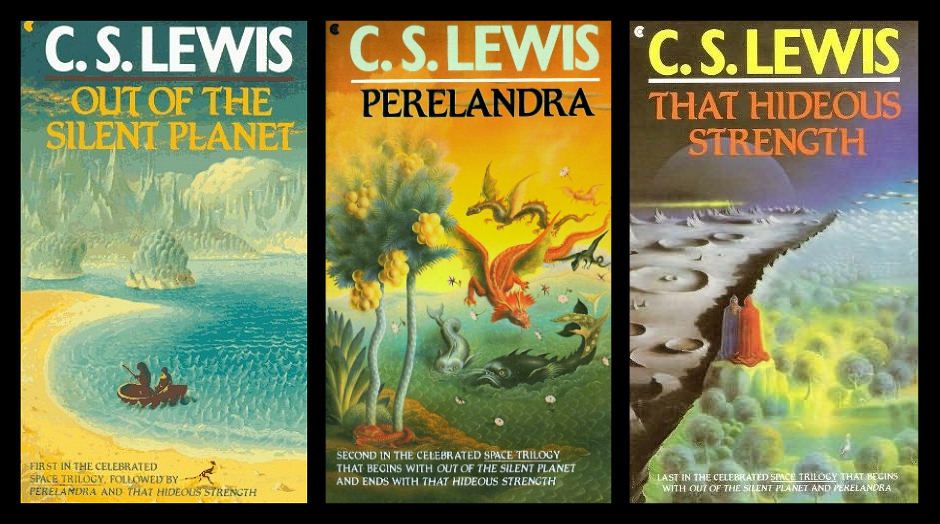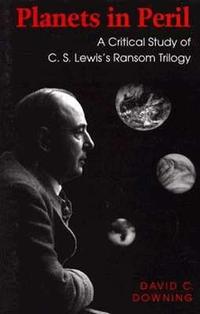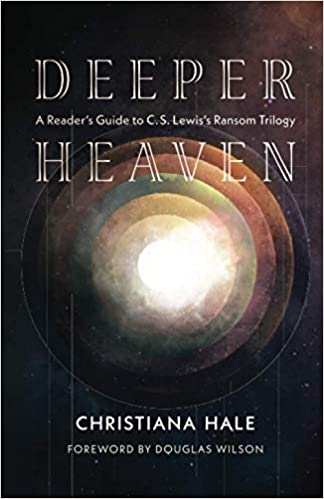While I cannot recall the precise order of my initial reading of C. S. Lewis’s books, I do know that his science fiction offerings must have been near the beginning. First, I have always loved science fiction; second, the realization that a Christian author wrote such things had to have piqued my interest. It’s possible The Screwtape Letters came first, but I had to have read what is commonly called “The Space Trilogy” during that same period. I, along with many others, prefer to call them “The Ransom Trilogy” after the main character, and also because the very name “Ransom” looks toward what Christ did for us on the Cross.
In my university Lewis course, I always include the final installment, That Hideous Strength, but have always felt that I am cheating my students by not requiring all three of the books. Given the nature of the course, however, which is a quest to expose students to all types of Lewis’s writings, I had to choose only one.
Now, though, I have an opportunity at my church to develop a course that will cover all three in a semester, and I am thrilled at the prospect. The course itself probably won’t be offered until the fall of 2022, but I am already in the process of reading as much analysis of the trilogy as I can. When I do teach the course, I want it to be as comprehensive as possible, with the background students need to fully appreciate what Lewis has done in these books.
I’ve begun my research with a re-reading of David Downing’s Planets in Peril: A Critical Study of C. S. Lewis’s Ransom Trilogy. Although I had read it previously, when I returned to the book, I was surprised to note that I—a consistent and insistent marker of anything in a book that I might use later—had neglected to do so the first time through it. So, in effect, I was starting fresh with Downing’s insights (and you can be sure it is thoroughly marked up now).
The themes in the book are exactly what I was seeking: the way in which Lewis “smuggled” theology into the trilogy; the debt owed to classicism and the medieval worldview in the overall plan for the books; the manner in which Lewis portrays evil and why he does so; the comparison of a cosmic voyage with a spiritual pilgrimage; and finally, some of the sources/models/influences on Lewis that helped inspire his writing.
Another excellent book, published just last year, is Christiana Hale’s Deeper Heaven: A Reader’s Guide to C. S. Lewis’s Ransom Trilogy. I’m only ten chapters into it, but the treatment Hale gives to the medieval cosmology, even though I possess prior knowledge of it, has a freshness and depth that I need if I want to explain the trilogy better. The introductory chapters introduce that cosmology and prepare the reader for what will follow. The book itself is then divided into major sections for each part of the trilogy. What I plan to do is, after I complete the author’s detailed examination of Out of the Silent Planet, stop right then and re-read the novel itself, relating it back to everything I will have by then received from both Downing and Hale. I’ll then return to Hale’s exposition on Perelandra, re-read that book, and then follow the same path for That Hideous Strength.
I will do all this while I eagerly await the release of A Compass for Deep Heaven: Navigating the C. S. Lewis Ransom Trilogy. The fact that Inklings expert Diana Pavlac Glyer is the editor of this forthcoming book makes it a must-read, in my view. The publisher promises it will become available in September.
Whenever I survey my university students, as well as the adults in my church, I discover that knowledge of the trilogy is sketchy at best. The only Lewis works the majority of them—students and adults alike—recognize are The Screwtape Letters, Mere Christianity, and The Chronicles of Narnia. I’m certainly not downplaying their significance—I teach them all because Lewis’s genius shines forth regardless of the genre in which he wrote. It’s time, though, that “The Ransom Trilogy” takes a more prominent place in the Lewis corpus.




